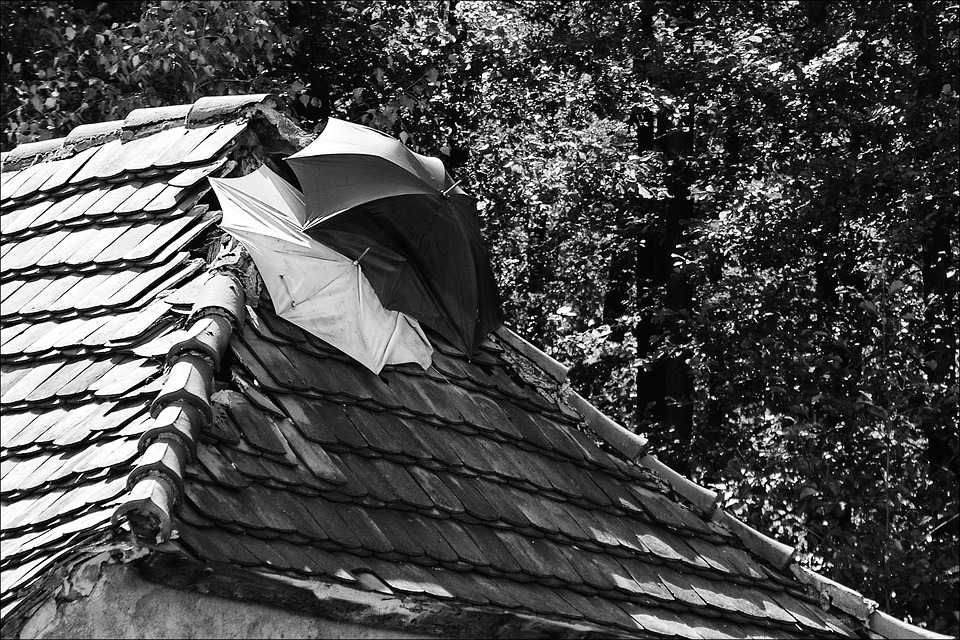Roofing repairs
Contents |
[edit] Introduction
The following overview may help homeowners gain confidence when making the decision about whether to replace or repair a roof.
[edit] One leak or many?
If the primary reason for the repair is a roof leak, it's important to clarify a few issues.
Determine whether or not the roof leaks in a single or multiple locations. Is it in a location that has leaked and been repaired repeatedly?
A single location, leaking for the first time, usually is not significant enough to prompt a full replacement. More likely that not, a single component of the roofing system (flashing, vent or a mis-nailed shingle) has failed, but the rest of the roof still could be in decent condition.
Leaks in multiple locations bode more ominous results. If multiple locations are having shingles loosen, nails rise or flashing fail, the chance of the roof being worn out are higher. When the same location has leaked and been repaired repeatedly, the same mistaken repair may be continuing to be performed.
It can be useful to get an assessment from a roof leak repair expert as to whether there is something un-repairable or if the past repairs addressed the wrong issue.
[edit] Leak location
Next, look at the roof leak location. Is it below, or in somewhat of a direct path below a skylight, vent, or pipe? Is it possibly at a valley or roof intersection where either one section of roof meets another or where the roof meets a wall? Or rather is it out in the middle of the roof field?
Leaks at intersections and valleys usually do not indicate that the condition of the roof is beyond repair. More likely, there are flashing issues.
Remember, there are very few leaks that are un-repairable. The issue becomes whether the roof has adequate remaining life to justify the repair's cost. However, leaks in the middle of a roof field with no nearby intrusions into the roof can be a bad sign.
[edit] Roof debris
If an unsightly roof (fungus or mildew stains or moss growth) is motivating the need for a new roof, it's important to find out more about what is under the stains or moss. A dirty roof does not always require replacement.
There are some roofs that will not withstand even the gentlest cleaning without sustaining damage. For example, there are some moss types and infestations that cannot be properly dislodged without stressing a roof. If a roof is on the borderline to start with, such a roof is best left alone. Money will be better spent on a new roof.
Aside from excessive moss infestations, cleaning the roof will most often help maintain roof life, specifically where growths such as moss could cause "micro-dams" on the roof and result in damage. Always be sure that the roof has adequate life remaining so maintenance will not be wasted.
[edit] Shingles
If the roof's shingles are starting to cup or curl upward, it may be time to consider replacing them. Cupping and curling are often signs of interior ventilation issues that result in excessive attic temperatures. It is a problem that could be corrected with a new roof installation as well, because it takes life off a roof that otherwise might have lasted longer.
Loose or dislodged shingles may signal an unfortunate, premature death of a roof. This may be a sign that the roofing material was installed incorrectly, even if the material itself has more life remaining.
Similar to leaks, the number of trouble spots will reveal a great deal. If there is only one trouble spot, repair should be sufficient. Multiple locations, however, indicate a bad installation that may justify replacement.
[edit] Related articles on Designing Buildings
Featured articles and news
Latest Build UK Building Safety Regime explainer published
Key elements in one short, now updated document.
UKGBC launch the UK Climate Resilience Roadmap
First guidance of its kind on direct climate impacts for the built environment and how it can adapt.
CLC Health, Safety and Wellbeing Strategy 2025
Launched by the Minister for Industry to look at fatalities on site, improving mental health and other issues.
One of the most impressive Victorian architects. Book review.
Common Assessment Standard now with building safety
New CAS update now includes mandatory building safety questions.
RTPI leader to become new CIOB Chief Executive Officer
Dr Victoria Hills MRTPI, FICE to take over after Caroline Gumble’s departure.
Social and affordable housing, a long term plan for delivery
The “Delivering a Decade of Renewal for Social and Affordable Housing” strategy sets out future path.
A change to adoptive architecture
Effects of global weather warming on architectural detailing, material choice and human interaction.
The proposed publicly owned and backed subsidiary of Homes England, to facilitate new homes.
How big is the problem and what can we do to mitigate the effects?
Overheating guidance and tools for building designers
A number of cool guides to help with the heat.
The UK's Modern Industrial Strategy: A 10 year plan
Previous consultation criticism, current key elements and general support with some persisting reservations.
Building Safety Regulator reforms
New roles, new staff and a new fast track service pave the way for a single construction regulator.
Architectural Technologist CPDs and Communications
CIAT CPD… and how you can do it!
Cooling centres and cool spaces
Managing extreme heat in cities by directing the public to places for heat stress relief and water sources.
Winter gardens: A brief history and warm variations
Extending the season with glass in different forms and terms.
Restoring Great Yarmouth's Winter Gardens
Transforming one of the least sustainable constructions imaginable.























